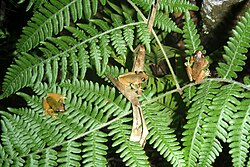| Exerodonta | |
|---|---|
 | |
| Exerodonta catracha | |
| Scientific classification | |
| Kingdom: | Animalia |
| Phylum: | Chordata |
| Class: | Amphibia |
| Order: | Anura |
| Family: | Hylidae |
| Subfamily: | Hylinae |
| Genus: | Exerodonta Brocchi, 1879 |
| Species | |
See text. | |
Exerodonta is a genus of frogs in the family Hylidae. This genus was resurrected in 2005 following a major revision of the Hylidae . Eleven species previously placed in the genus Hyla were moved to this genus. They are endemic to south-central Mexico.



